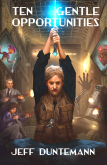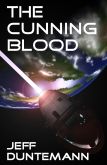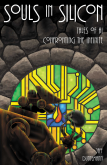- This stuff has been piling up. And I’ve been tired and perhaps a little grouchy. It’s just a phase I’m going through.
- From the People-Whom-I-Had-Once-Known-About-But-Then-Forgot Department: Annie Jump Cannon, who mostly eclipsed Edward Pickering while helping to complete the Harvard Classification Scheme for stars. Annie made it into the slightly snotty but very entertaining Rejected Princesses site. (Thanks to R. K. Modena for reminding me of Annie and pointing me to Rejected Princesses.)
- Alas, it sounds a lot like Nook is circling the drain.
- Huh? A scientific expedition to the Arctic to study how global warming is melting Arctic ice had to be postponed because…there’s too much ice in the Arctic.
- And you wondered why we just bought a house in Arizona.
- Here’s how NASA keeps “new telescope smell” from destroying new space telescopes. (Thanks to Frank Glover for the link.) One can only speculate what garlic breath would do to them.
- A half-klick diameter radio telescope is under construction in China.
- The Supreme Court just ruled that the Feds can’t just take a raisin farmer’s raisins and give them to other people. That would be, like, theft or something. Government wouldn’t do that, right?
- So you can now keep your raisins. But watch out for your kids: The National School Lunch Program bans whole milk from school lunches but allows sugar-sweetened skim milk. Government always knows best, even if it kills you.
- Cool optical hack: Project the image of the full Moon from a telescope onto a ping-pong ball and get a 3-D model of the Moon.
- This has been around for awhile, but it’s worth bookmarking: a very big list of all the things (supposedly, if often ludicrously) caused by global warming. Science journalism makes climate science look silly and dishonest, and science generally look bad. I used to think I should have gone to journalism school. Now I’m glad I didn’t. It’s starting to sound like a dumping ground for failed Polly Sigh majors.
- Evidence? A scientist hoaxed the media by inventing a study showing that you can lose weight eating chocolate bars…and the media bought it.
- Here’s a database of POP songs used in TV commercials. It does not list (as best I can tell) commercials that were later morphed into pop songs, like “She Lets Her Hair Down” and “Come to the Sunshine,” both originally hair product ads.
- In the new film Pixels, Pac Man attacks Manhattan. The concept reminds me of a very old and really bad TV movie in which an airplane gets stuck between two days of the week, and its passengers have to confront titanic Pac-Man like monsters that eat each expired day’s reality so that the new day can be constructed on a clean backdrop. (Or something.) But damn if I can remember what movie that was.
Odd Lots
Short items presented without much discussion, generally links to other Web items
Odd Lots
Odd Lots
- If you’re considering self-publishing, here’s a site you should read, and follow.
- We’ve discovered a couple of what I guess we could call owie-hot superconductors (room temp is for wimps!) with critical transition temperatures as high as 141C. (Alas, none of the alloys contain ytterbium.) The larger site is a good resource for superconductivity freaks.
- Frank Glover pointed me to something I wouldn’t have expected: an Airbus recoverable orbital cargo module that flies back to ground with…propellers.
- Esther Schindler sends a link to an article graphing 144 years of stats on American marriage and divorce. Marriage rates are now the lowest they’ve been in recorded history.
- Matt Ridley absolutely shreds the 60-year-old war on fat and cholesterol.
- It’s possible (not easy, but possible) to turn your Windows 10 upgrade to a bootable ISO.
- Roy Tellason has a marvelous index to nearly all useful vacuum tubes, with basing, filment voltage and current, description, and uses. (Thanks to Pat for the link.)
- Don’t stop there: Roy also has indexes for 2N, 2SA, 2SB, 2SC, 2SD, 2SH-2SJ, and odd-numbered transistors. Also diodes, optoisolators, and bridge rectifiers. ICs too, in too many separate indexes to list here. Go to the index of indexes and see it all.
- The Foundation for Individual Rights in Education (FIRE) has a summer conference teaching students how to fight campus speech codes. Applications are due by July 3, so if you’re a student or know one, the time to act is now.
- A big sorry-you-insufferable-idiots goes out to our snooty urban elite: Both malls and suburbs are doing fine, and in some places are roaring back.
- One man designed Tobor the Great, Robbie the Robot, and the Lost in Space robot, and he lived to be 100.
- More robots: Among the least-appreciated funny robots in film history are the one-eyed robotic lawnmowers that chase Jerry Lewis around in the mayhem-filled action climax of his 1962 film It’s Only Money. Here’s the original trailer. Watch it to the end, where the lawnmowers steal the scene even from Lewis.
- Presidential portraits from another universe by artist Jason Heuser. My favorite is Richard Nixon with brass knuckles punching a smilodon’s lights out, though Ben Franklin fighting Zeus while riding an American Beauty-style kite is right up there.
Odd Lots
- Let me recommend a thoughtful blog on the issues of writing and publishing, which is remarkable for having one of the most civil and intelligent comment sections I’ve ever run across. (In recent years I’m reading blog comments less and less, because they’re mostly content-free tribal hatred.)
- Maybe the Ralpha Dogs had a hand in this: Making tunable microwave antennas from columns of liquid metal. (Somebody sent me this link, but I don’t remember who. Feel free to take credit in the comments.)
- Tom Roderick sent me this link to a video showing the guldurndest steampunk corkscrew ever. I like wine, but maybe not quite that much.
- And while we’re watching movies, here’s the craziest damned thing I’ve seen in awhile: A jet-powered go-kart. His name is Colin Furze. He’s done other crazy things too, and I envy not only his craziness but his youth, energy, and good looks. Here’s hoping he doesn’t wrap himself around a tree at 200 MPH before he lives long enough to go bald. (Thanks to Pete Albrecht for the link.)
- Sarah Hoyt’s reflection on the Golden Age of SFF, and how we writers can bring about the second coming of the Golden Age, if we only choose to. It relates to her concept of Human Wave SF & fantasy, which I did a series on some time back.
- Hurricane season opens tomorrow, and NOAA itself is forcasting below-normal hurricane activity this year.
- We’re finally admitting that open offices (that is, sitting at a table in a field of fifty or a hundred tables without any cube walls between them) are a stupid, self-defeating idea. Productivity requires concentration, and concentration requires privacy and quiet.
- Jim Strickland pointed me to FontSquirrel, a source of free and almost-free fonts. (Nearly all are free for personal use; some require payment for commercial use.)
- I think most of us figured this out years ago: Ideological echo-chambers are self-defeating. I would also add that they are creepy. Pod-people creepy…because what they do is create pod people.
- Stone yourself skinny? No wonder Colorado people are the thinnest in the country!
- Nuts & Volts Magazine (to which I bought a lifetime subscription in 1980!) is posting some of their more interesting back articles. This one, which explains how the Edison storage cell works and how to build one at home, is one of my favorites.
- The coordinator of Sad Puppies 4 lays out her theory of what makes a story Hugo-worthy. To Kate’s list I would add that contenders have something in the way of world-building, which is big part of what I read SF for.
- Ever wanted a Bigfoot blanket? I know where you can get one.
Odd Lots
- This may explain a certain amount of the drama coming out of the anti-Puppies camp…or, for that matter, a great deal of modern politics: Histrionic Personality Disorder (HPD). (Thanks to Adam Baldwin for the link.)
- OMG! Global warming may mean stronger weed! (That makes it all better, right?) Colorado’s on it.
- BitTorrent recently released Bleep, a private encrypted P2P messaging system. Of special note is “whisper mode,” in which a message sent vanishes from both devices 25 seconds after it arrives. Whisper mode also blurs out the display so the message can’t be screencapped. It’s available for iOS, Android, Windows, and Mac.
- Ok. This is weird: KFC in Germany developed a tray liner…that was a disposable Bluetooth keyboard. Pair it with your phone, and you can type with the same greasy fingers you’re scarfing chicken with. It was a test, and only available for a single week. Most of the tray liners, furthermore, went home with customers.
- Where’s my flying car? Well, there was once a flying Pinto. (For a little while. Until the wings came off.) I’m still not sure that counts as a flying car. (Thanks to Bill Higgins for the link.)
- Fred Richardson messaged me to say that he had built a Shive torsional wave machine, just like the one that starred in the Carl & Jerry story, “The Bell Bull Sessions.” It’s now for sale on eBay.
- I’m interested in what SFF authors have bichons. I’m one, Jim Butcher is another. Are there more? I’m also interested in bichons that appear in SFF stories. Toby from Varley’s The Golden Globe is the best-known. A bichon also appears in The Last Policeman trilogy, and, of course, my own Mr. Byte appeared in David Gerrold”s excellent “The Martian Child.” Any others?
- I recently learned of Dabble, which is basically Uber for teaching one-off courses. Would I make any money teaching Pascal/Lazarus programming? I could also try teaching SF writing, except that I’m not always sure how I do it myself.
- The Raspberry Pi Model A+ is the beating heart of the do-it-yourself PiGRRL GameBoy-like retro game console. A good video for a chance, though not a step-by-step. I love that little bitty display. (Thanks to Eben Upton for the link.)
- The opah has recently been identified as the only known fish with whole-body endothermy; that is, it’s warm-blooded.
- The National Park Service has posted a number of recordings of the Edison Talking Doll, which was a great deal like Chatty Kathy (and similarly electronics-free) except it was sold in 1890. People have commented that the dolls sound creepy or possessed. To me they sound like the women who made the recordings were shouting at the tops of their lungs to provide enough energy to move the recording needles on the wax cylinders. Listen to the recordings again and see what you think.
Odd Lots
- I’m less sure of this than the author, but it’s something to think about: Apple may not always rule; look at IBM.
- Researchers who were testing Android apps to see what-all they connected to (generally without notifying their users) found that dopey little apps of no special character were connecting to thousands of tracking sites. Then they did the obvious, and created an app that watches the other apps and logs what connections they make.
- The EM Drive makes my head hurt, though in a good way. NASA Spaceflight’s article on the gizmo doesn’t exactly make its mode of operation clear, but the fact that NASA is even testing it is reason to stand up and cheer. Somewhere in my notes is an old concept (predating The Cunning Blood by a decade, in fact) that posits an antigravity device built out of the parts in old microwave ovens and harvests energy from the quantum vacuum. It would be so vindicating if this thing works out! (Thanks to Pete Albrecht for the link.)
- The Atlantic takes on lifestyle panic. Don’t miss this one. (I may have been ahead of the curve when I talked about it in 2010.)
- The Sun just ain’t wakin’ up nohow. Barely a year after Cycle 24’s sunspot maximum, whatever sunspots exist are barely discernable. Last year we had the weakest peak since 1906, and the cycle as a whole may eventually become the weakest in recorded history.
- Don’t relax too much: The Carrington Event occurred during a weak solar cycle.
- Recruiters looking to discriminate against older people are now asking for “digital natives.” Lawsuits are beginning. The real problem: It’s legal to charge employers more for group health policies when their staff skews older. Outlaw age underwriting entirely, and that problem will mostly go away.
- Will TV just die already? Cable subscribers drop below Internet subscribers at Comcast. Anything you can watch on TV, you can watch on the Internet. TV is now a redundant nuisance.
- As an Army radio operator stationed in Italy, my father watched the March, 1944 eruption of Vesuvius, and called it the scariest thing he ever saw. That was 71 years ago. If (nay, when) it erupts again, we’re going to have a lot of very serious problems.
- Everybody’s aggregating this, but it sounds bogus to me: The more coffee you drink, the longer you’ll live. (Some people I know should therefore live forever.) I’ll stick with my theory: You can do worse than your genes, but you can’t do better.
- And might I also suggest, for those who attempt immortality the Folgers way, to recall the dangers of invoking the invisible, jet-packed Mr. Coffee Nerves.
- How long would one of Tesla’s new Powerwall home-power batteries keep your house running? Wired does the math.
- If you want to read Larry Correia’s Monster Hunter saga, start at the beginning. The books make much more sense if you read them in order. Baen offers the first three as an ebook bundle.
Odd Lots
- Hurricane activity is at a 45-year low, and no major hurricane has achieved landfall on US soil in almost ten years. Tornadoes have been pretty scarce recently as well. Then again, it’s mid-April and snowing like hell outside right now. Two outa three ain’t bad.
- The Food Babe gets her you-know-what handed to her. This, after all, is the woman who said, “There is just no acceptable level of any chemical to ingest, ever.” Wow. I probably shouldn’t exist, then. (Thanks to Pete Albrecht for the link.)
- More evidence that salt isn’t the demon that government guidelines insist that it is. Remember, you can do the experiment on this one, as it applies to yourself: Give up salt for a month and record your blood pressure every day. Then go back on salt and record your blood pressure every day. If your BP doesn’t change significantly, you can pretty much assume that salt isn’t an issue.
- Red meat is not the enemy. And yes, the science is complicated. What science isn’t?
- Crickets are not superfood. Who knew?
- Carol and I have tried this Moscato and found it good.
- Someone pointed out that my Low-Voltage Tubes page on junkbox.com had gotten corrupted. Indeed it had–and I had unknowingly copied that corruption (which was present in my HTML source files)–onto all the backups I have here. So I pulled a trick I had thought about for a long time: I looked up the site on the Internet Archive’s Wayback Machine, and checked their images of junkbox.com until I found one with an intact copy of the article. I then just lifted the portion of the file that had gotten corrupt and dropped it into the newest copy of the corrupted file. Fixed.
- Amazon has a new contract with Harper-Collins that gives the publisher full agency; that is, the freedom to set its own prices. Amazon is posting a notice on the sales pages of full-agency titles telling the customer that the publisher has set the price, not Amazon.
- Here’s some actual data crunching of the Sad Puppies phenomenon, along with a good deal of sane and rational analysis. Stop hurling hate, and understand what’s going on. Hating isn’t helping your cause one bit.
- ESR thinks that the real problem dividing SFF right now is literary status envy. The piece goes back to last summer, which was before the whole industry went nuts over Sad Puppies. Worth reading, maybe twice.
- If you’re an SP3 supporter, you can get all kinds of Sad Puppies 3 merchandise at the logo artist’s Cafe Press studio shop.
Odd Lots
- 2014 was a lousy year for adult fiction and nonfiction sales both. SF was down 7%; fantasy down 13%; computer books down 12%. To sell anything at all, you need to be chasing all those bookish kids who are supposedly all off somewhere playing computer games. Or something.
- A “fix-up” in the SFF universe is a novel constructed out of shorter works, with some edge-smoothing to make the whole thing hang together. Having seen the big list of SFF fix-ups on Wikipedia, I realize that I’ve read a fair number of them without ever realizing that they were in fact fix-ups. So I guess the techniques work. Should I perhaps begin The Everything Machine with a slightly modified “Drumlin Boiler”? I’m now seriously considering it. (Thanks to Frank Glover for the link.)
- Too much salt may kill you. So may too little. And it may not kill you at all, in any quantity. So why all the kvetching about salt?
- We may live in a much bigger galaxy than we thought–and a corrugated one, at that,
- A new class of drugs called orexin antagonists have begun to be marketed as sleeping pills, but may also confer resistance to Alzheimer’s Disease. New and still tentative studies suggest that orexin antagonists may also be used to reduce appetite. (PDF; Read the whole paper, or at least find the section on orexin.)
- The first 3-D printer for metal is about ready to mass-produce. It’s an odd system in that it uses metal clay, which must then be…yes indeed…baked. (Thanks to Pete Albrecht for the link.)
- Tom Naughton of Fat Head fame reviews Malcolm Kendrick’s book Doctoring Data, and if you’ve ever had a suspicion that medical studies are a stretch (or in some cases completely bogus…remember Ancel Keyes, the consummate medical fraudster?) it sounds like a great read.
- A guy snuck into several Ivy League universities and acted like a student for four years without being noticed. It’s unclear how much he learned, but the article makes the (to me, obvious) case that today an American college education has far less to do with education and almost everything to do with credentialing, and sorting Americans into populations of winners and losers.
- And he didn’t invent the concept. There was a TV sitcom in 1965 called Hank, about a good-natured campus food-truck guy with a secret life sneaking into classes, so he could someday have a better job than driving a food truck. I followed the series, and remember it fondly. Alas, Dick Kallman, the lead, was murdered in 1980.
- Now that I know they’re out there, I’m going to start watching for abandoned microwave towers. So is this primarily a California thing? Ever seen any east of Nevada?
Odd Lots
- The xenon flash problem with the Raspbrry Pi 2 board has been explained reasonably well on the Foundation site, by Liz Upton. Key seems to be that U16 is not a typical SMT chip encased in black resin, but a naked BGA (Ball Grid Array) chip, which allows light to hit the chip’s silicon directly. HackaDay’s Brian Benchoff says that a cheap green laser pointer will also do it, suggesting that the wavelength of light hitting U16 matters crucially. Hey kids, this is a science fair project: What wavelengths of light trigger photoelectric emission on an exposed silicon die? (Many thanks to Michael Covington for the link.)
- Adafruit has a nice benchmark page for the Raspberry Pi 2, which also provides detailed descriptions of the differences between the new board and the older boards.
- What’s going on in the Martian atmosphere?
- There’s a single SMT chip at the heart of the Baofeng radios I described recently: The RDA1846. I would love to see this on a cape/shield for one of the popular embedded boards, especially the Raspberry Pi. Not quite a true SDR, but mighty close, and I’d guess damned useful for radio tinkering. (Thanks to Bob Fegert for the link.)
- By the way, “Baofeng” and “Pofung” are the same company. It sounds like they were trying to make “Baofeng” easier to pronounce for Westerners, but in truth I don’t think it was much of a problem to being with, and I admit I was confused when I first ran across “Pofung.”
- Norse’s real-time IP attack map is very cool in a War Games sort of way, but it takes some study to figure out what exactly it is that you’re seeing. (Thanks to Pete Albrecht for the link.)
- Here’s a nice collection of homebrew radio projects from Jim McNutt WA6OTP, with pictures and schematics. Fine work!
- An interesting short introduction to the geophysical differences between Earth’s north pole annd south pole.
- More crazy weapons, including but hardly limited to the Panjundrum. I’ve always liked the Triebflugel, which was a great idea until you had to land it, kind of like the XF-85 Goblin.
- That’s not a monkey on that marathon runner’s back. It’s a tomato-dispenser robot. I guess we’re in somebody’s vision of the future. It certainly isn’t mine.
Odd Lots
- Scott Adams reminds us that science has failed us on diet and health so often that some people assume that science itself is unreliable. His point is good: Being wrong is part of the scientific method, but humans see patterns in things, and that pattern simply means that science is slower than we’d like, and refines knowledge over time by identifying our mistakes. We forget this at our peril.
- Intel’s latest rev of its NUC (Next Unit of Computing) has a Broadwell CPU and a swappable lid that provides a standard form factor for 3rd party extensions. The only big mistake is the total lack of SD card slots. We’re well along toward my 15-year-old prediction that computers will ultimately be swellings on the backs of monitors.
- Why the Feds are terrified of hobby helicopters. (Drones? No, you’ve got it backwards. Those are the Feds.) This is nonsense, and the whole thing is a dodge. I made this point some time back: Governments do not want to be watched. No governments, anywhere. That’s what the whole “drones” thing is about, top to bottom.
- Wired staffers bid farewell to Radio Shack. Me too. I considered a TRS-80 in 1978, and occasionally regretted not getting one once my friend Jim Dunn bought one in 1979.
- Radio Shack, yes. We also forget how the Model 100 (noisily) transformed tech journalism. In 1984 Xerox tried to field a competitor to the Model 100, which I evaluated for our department. It was hideous, and (worse) cost $2500, which would be $5700 today!
- Here’s the mother lode of scanned and browsable Radio Shack catalogs. I still have a few of these. (Thanks to Esther Schindler for the link.) As an example, here’s the page describing the stereo I bought the first Christmas Carol and I were married, 38 years ago. It still works, and we still use it.
- Very cool physics demo on YouTube: An AA battery and four disk magnets pull themselves around inside a tube made of coiled copper wire. (Thanks to Bob Fegert for the link.)
- A supercapacitor made from nanoelectrodes and a kitchen sponge. (Again, thanks to Bob Fegert for the link.)
- Tides do not seem to affect earthquakes and volcanic eruptions. The discussion is plainly written and I think anybody can follow it.
- I hadn’t heard of the Sad Puppies before a few days ago. (Whatever you may think of the concept, they have a great logo.) I guess I’ve been away from Fandom for awhile.
- Lileks has a feed on Tumblr. Worth following, as is Weird Vintage.
Odd Lots
- Big, big news today: The Raspberry Pi foundation is now shipping the rumored Raspberry Pi 2 board. (What this means in practical terms is that all your usual suppliers are sold out.) Will write more once I learm more, but geddaloadadis: Quad 900 MHz Cortex A7 CPU, plus a full gigabyte of RAM. And the sleeper, which is still tying my head in knots: The foundation has cut a deal with Microsoft to provide a version of Windows 10 that will run on the RPi2. The cost? Free. No more details than that right now, but I’ll be watching it closely. (Thanks to Bob Fegert for alerting me. Twitter has already earned its keep.)
- Update: The new Windows 10 deal with the RPi community is part of Microsoft’s larger strategy on the Internet of Things, and will be available without charge through the Windows Developer Program for IoT.
- Jim Strickland sends a link to Microsoft BASIC for 6502, in assembly. This is from 1978, and the oldest publicly available source code written by Bill Gates. The interpreter exists for the COSMAC 1802 as well, and I may still have it somewhere. It’s on paper tape, and I think in a metal 35mm film can. This was a great use for 35mm film cans, back when there were 35mm film cans, and paper tape to put in them.
- Wired‘s vulcanologist Erik Klemetti has a fascinating article on how magma forms hexagonal pillars a la Devil’s Postpile and Giant’s Causeway in Northern Ireland. These figure in the yet-unbegun novella prequel to The Cunning Blood, so it was nice to get some science on them.
- If you liked the Panjundrum (see my Odd Lots for January 29, 2015) you will love this thing, whatever they call it: It’s a Panjundrum that flies. (Thanks to Pete Albrecht for the link.)
- UPDATE: One of my readers just wrote to tell me that it’s called a “girandola.”
- Yes, this is short for an Odd Lots, but I wanted to get notice out on the RPi2 sooner than tomorrow or the next day.











